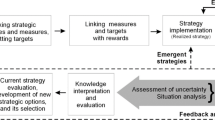Abstract
This article reports a case study describing how the principles of a cognitive apprenticeship (CA) model developed by Collins, Brown, and Holum (1991) were applied to a graduate course on performance systems analysis (PSA), and the differences this application made in student performance and evaluation of the course compared to the previous semester. I analyzed the requirements for the CA learning environment and identified the contributions of instructor, students, and the course based on those requirments. I then applied the findings to create an authentic learning environment based on CA principles. In this case the students became performance consultants, immersed in practical application of the PSA content and methodology to authentic organizational performance issues provided by real clients. Finally, I compare student evaluation of the course to student evaluations in the previous semester, and report their responses to a set of open-ended questions concerning the application of CA principles.
Similar content being viewed by others
References
Ackoff, R. L. (1999).Ackoffs best. New York: John Wiley & Sons Inc.
Brown, J. S., Collins, A., & Duguid, P. (1989). Situated cognition and the culture of learning.Educational Researcher, 18(1), 32–42.
Ceci, S. J., Rosenblum, T. B., & DeBruyn, E. (1998). Laboratory versus field approaches to cognition. In R. J. Sternberg (Ed.),The Nature of Cognition (pp. 385–408). Cambridge, MA: MIT Press.
Chiu, M., Chou, C., & Liu, C. (2002) Dynamic processes of conceptual change: Analysis of a constructing mental models of chemical equilibrium.Journal of Research in Science Teaching, 39(8), 688–712.
Collins, A., Brown, S. B., & Holum, A., (1991). Cognitive apprenticeship: Making thinking visible.American Educator, 15(3), 4–46.
de Jager, B., Reezigt, G. J., & Creemers, B. P. M. (2002). The effects of teacher training on new instructional behaviour in reading comprehension.Teaching and Teacher Education, 18, 831–842.
Dean, P. J. (1999). Designing better organizations with human performance technology and organization development. In H. D. Stolovitch & E. J. Keeps (Eds.),Handbook of human performance technology (pp. 321–334). San Francisco, CA: Jossey-Bass Pfeiffer.
Gagné, R. M. (1985). What should a performance improvements professional know and do?Performance and Instruction, 24(7), 6–7.
Gagné, R. M., Briggs, L. J., & Wager, W. W. (1992).Principles of instructional design. Orlando, Florida: Harcourt Brace Jovanovich.
Gagné, R. M., & Medsker, K. L. (1996).The conditions of learning: Training applications, Fort Worth, TX: Harcourt Brace College Publishers.
Gharajedaghi, J. (1999).Systems thinking: Managing chaos and complexity. Boston, MA: Butterworth-Heinemann.
Gilbert, T. F. (1996).Human competence: Engineering worthy performance. Amherst, MA, and Washington, DC: Human resources development press and International Society for Performance Improvement.
Harless, J. H. (1975).An ounce of analysis is worth a pound of objectives. Newman, GA: Harless Performance Guild.
Mager, R. E., & Pipe, P. (1997).Analyzing performance problems. Atlanta, GA: Center for Effective Performance Inc.
Mayer, R. E., Moutone, P., & Prothero, W. (2002). Pictorial aids for learning by doing in a multimedia geology simulation game.Journal of Educational Psychology, 99(1), 171–185.
Quinn, J. (1994), Connecting education and practice in an instructional design graduate program,ETR&D, 42(3), 71–82.
Quinn, J. (1995), The education of instructional designers: reflections on the Tripp paper.Performance Improvement Quarterly, 8(3), 111–117.
Robinson, D. G., & Robinson, J. C. (1995).Performance Consulting: Moving beyond training. San Francisco, CA: Berrett-Koehler Publishers, Inc.
Rosenberg, M. J. (1990). Performance technology; Working the system.Training, 27(2), 42–48.
Rossett, A. (1999). Analysis of human performance technology. In H. D. Stolovitch & E. J. Keeps (Eds.),Handbook of human performance technology (pp. 139–162). San Francisco, CA: Jossey-Bass Pfeiffer.
Rummler, G. A. (1999). Transforming organization through human performance technology. In H. D. Stolovitch & E. J. Keeps (Eds.),Handbook of human performance technology (pp. 47–66). San Francisco, CA: Jossey-Bass Pfeiffer.
Seel, N. M., Al-Diban, S., & Blumschein, P. (2000). Mental models & instructional planning. In J. M. Spector & T. M. Anderson (Eds.),Integrated and holistic perspective on learning, instruction, and technology (pp. 129–158). Dordrecht, The Netherlands, Kluwer Academic Publishers.
Spector, J. M. (2000). Building theory into practice in learning and instruction. In J. M. Spector & T. M. Anderson (Eds.),Integrated and holistic perspective on learning, instruction, and technology (pp. 79–90). Dordrecht, The Netherlands: Kluwer Academic Publishers.
Stolovitch, H. D., & Keeps, E. J. (Eds.). (1999).Handbook of human performance technology. San Francisco, California: Jossey-Bass Pfeiffer.
Tripp, S. D. (1994). How should instructional designers be educated?Performance Improvement Quarterly, 7(3), 116–126.
Van Merriënboer, J. G., Clark, R. E., & de Croock, M. (2002). Blue prints for complex learning: The 4C/ID model.Educational Technology Research and Development, 50(2), 23–43.
Author information
Authors and Affiliations
Corresponding author
Rights and permissions
About this article
Cite this article
Darabi, A.A. Application of cognitive apprenticeship model to a graduate course in performance systems analysis: A case study. ETR&D 53, 49–61 (2005). https://doi.org/10.1007/BF02504857
Issue Date:
DOI: https://doi.org/10.1007/BF02504857




